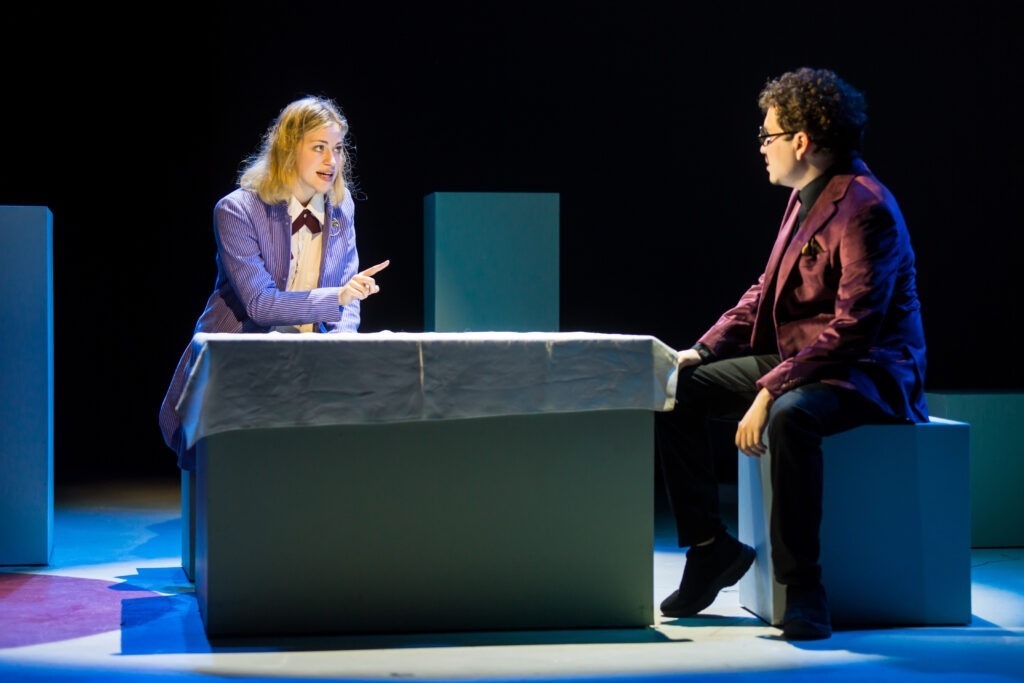“Nickel and Dimed” gives honest portrayal of the working-class
3 min read
UMW Theatre’s production of “Nickel and Dimed” portrays the struggles of the lower working-class. Photo Courtesy of Geoff Greene
by ELI OSBORNE
Staff Writer
Due to editor error, a previous version of this article incorrectly referred to “Nickel and Dimed” as a novel. It is a work of nonfiction.
The “Nickel and Dimed” cast made their final performance this past Sunday after charming audiences from across the Fredericksburg and UMW area.
The production adapted the acclaimed work of nonfiction by Barbara Ehrenreich into a witty, entertaining, visually-rousing spectacle. The lives of the minimum-wage workers Ehrenreich calls attention to thrust viewers into reality and compel them to examine the tragedy of errors in the employment system. Like Ehrenreich’s work of nonfiction., the play follows her journey to build a critical essay on the wage gap in the 1990s, working at different low-paying jobs across America to learn about the vast diversity of people at the gap’s tail end. All of this is done under the backdrop of colorful neon lights, detailed literal backdrops and boxes—yes, gray boxes—alone to set the scenery. On top of a riotous soundtrack, its mixture of visual storytelling, committed acting and sobering subtext sent audiences up from their seats, myself included. Naturally, I couldn’t just suppress my praise for the show, so I decided to take to the campus of UMW and interview several other people, who all were as, if not more, awestruck as I was by the show.
Emily Curtin, a junior communication and digital studies major, took away more from the show than she expected to.
“You could really relate to the characters; the actors did really well,” said Curtin. “I didn’t think it would hit as hard as it did. It was just so human and grounded and emotional.”
Curtin was also impressed by the show’s stage production.
“The stage production was really cool too,” Curtin said. “How they mimed driving and moved all those blocks around, they still meshed that with the story and its themes really well. I loved it.”
Another student, Jesse Frye, a junior American studies major, applauded the show’s ability to portray lower-income households.
“I grew up in a low-income house myself,” Frye said. “I think they do a really great job of recreating these quick-paced jobs they undergo. The relatable nature of the characters made the show more real for the audience.”
Katriel Lee, a sophomore pre-law philosophy and political science double major, also found the show extremely relatable when thinking upon her own experience working multiple jobs.
“The problems each character has to confront as a lower-class worker are things people who make way more than that don’t have to worry about,” she said. “The amount of work minimum-wage workers have to do well, almost pitch-perfect every hour of every shift, totals up to a lot more work than what upper-class jobs could ever demand. I mean people in the service industry have it rough; it’s stressful being a waiter and you’re managing a lot.”
This theatre production of “Nickel and Dimed” succeeded a thousandfold in telling a compelling story about the problems that members of the lower working-class face. People came in droves last Friday when I went: singles, families, couples, old, and young all came for a show.
Overall, this was a fantastic production that set the stage for a successful semester for UMW Theatre.


